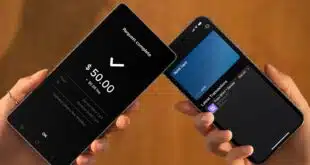The future of payments belongs to innovators that use software platforms to develop new services that can be quickly brought to market, according to David S. Evans, an economist and veteran payment-industry observer. Evans, keynote speaker at the Federal Reserve Bank of Chicago’s annual payments conference Thursday, cited PayPal Inc., the new Square Inc., and a Denver-based developer, IP Commerce Inc., as leaders in what he called a revolutionary transformation of electronic payments that some day will be built upon no more than five to 10 software platforms that will give rise to countless applications for consumer and business users.
“There is going to be a race,” Evans said. “PayPal is first out of the gate and has made significant progress, but there are going to be other players.”
Evans was referring to the PayPal X platform that the eBay Inc. subsidiary introduced late last year, a platform that enables third-party software developers to build new applications based on a foundation of PayPal code (Digital Transactions News, Nov. 3). In just six months, these developers have produced 25,000 applications, according to Evans, founder of the Market Platform Dynamics consulting firm and a part-time professor at the University of Chicago Law School and University College London.
IP Commerce, meanwhile, has constructed a software platform that builds upon its myriad connections with payment processors, Evans said. And Square, while less than six months old, has significant potential with its platform built upon Apple Inc.’s iPad and iPhone/iPod touch operating systems and Google Inc.’s Android operating system for mobile devices (Digital Transactions News, April 27). “We’re already seeing lots of entry by developers … entrepreneurs who are coming up with creative ways to have software based on these systems,” Evans said. “It’s almost certain to lead to a massive amount of innovation over the next decade.”
One result of all this innovation, however, is “the blurring of online and off-line” payments, according to Evans. He cited the example of Rentalic.com, a new company that enables people to rent their personal property, such as their lawn mowers, to neighbors, friends, and family members, and receive payments via PayPal. “It’s basically being used by someone who’s going out and renting something in the physical world,” he said.
In response to an attendee’s question about whether PayPal has designs on point-of-sale payments, a PayPal panelist, Dan Schatt, general manager of financial innovations, said, “The traditional physical point of sale is not where we see ourselves.” But he acknowledged how technology is changing the payments industry. “We’re not going in the direction to the physical point of sale, but we’re being pulled by the Internet” to places PayPal hadn’t necessarily considered as it seeks growth, he said.
Payments innovators are finding that changing longstanding business models is no cakewalk. Jack Dorsey, co-founder of Twitter and chief executive of San Francisco-based Square, reports in a letter under the headline “Taking Time” on Square’s Web site that developing a new payment alternative has been “surprisingly difficult.” Square announced its existence in December. “Before us was an industry and a process in dire need of simplification,” Dorsey said. The letter also said Square is now out with its apps for the iPhone, iPod touch, and Android after having released its iPad app in early April.
Mobile payments got a lot of attention at the conference, but so did related technologies such as mobile remote deposit capture in which bank-account holders can deposit checks by taking pictures of them on their smart phones and uploading them to their bank. The pioneer in this service, San Antonio, Texas-based USAA FSB, introduced its Deposit@Mobile for the iPhone last August, and it now has an Android app. About 10% of the checks USAA receives daily now come in through the service, with 82% from iPhones and 18% from Android-equipped devices, John Brady, vice president of application architecture, tells Digital Transactions News. USAA serves a dispersed military customer base and has only one branch, which is at its headquarters.





